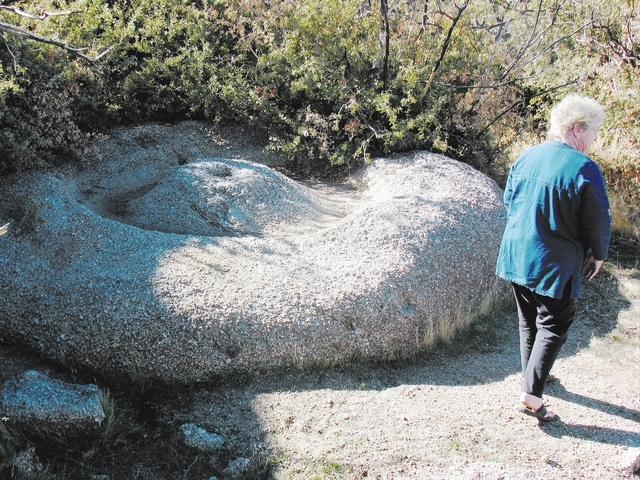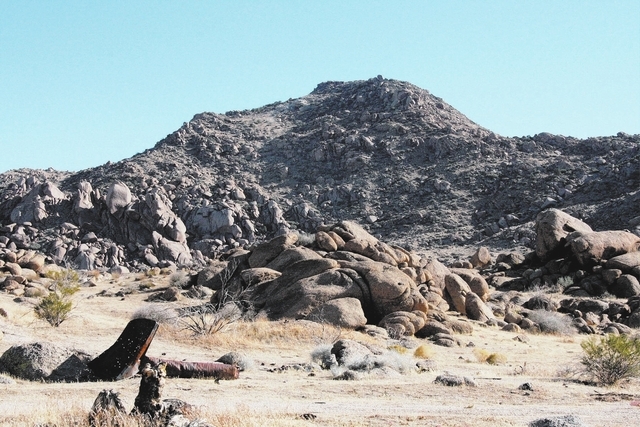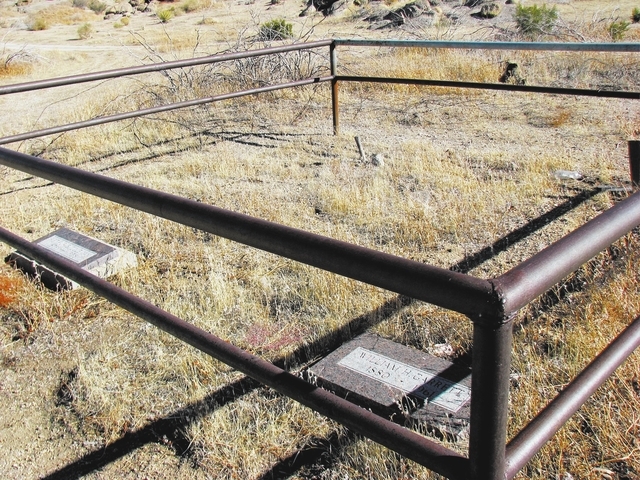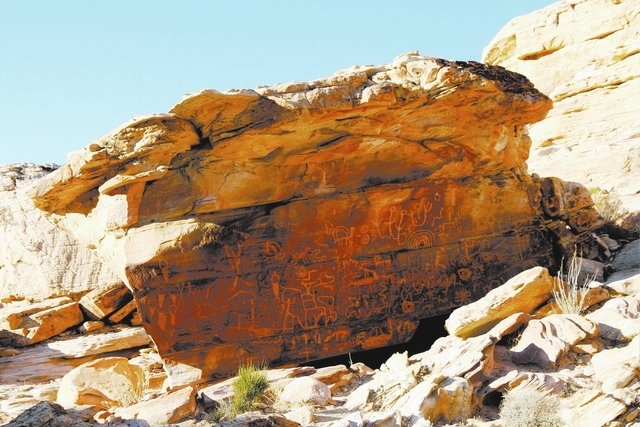Gold Butte Drive was named for old mining town
More often than not, ghost towns are just that: ghosts — unseen and forgotten. Yet sometimes, some can have a legacy that goes beyond the time they existed. Thus, it is partly through Gold Butte Drive, a small street near the intersection of Cheyenne Avenue and Lamb Boulevard, that an early 20th-century mining town is remembered.
In the middle of the east valley and part of a subdivision of streets named for ghost towns, Gold Butte Drive gives remembrance to a likewise small area but with great cultural and historic value.
Mark Hall-Patton, administrator for the Clark County Museum system, said Gold Butte was part of the early 20th-century mining boom in Nevada and many small towns.
Gold Butte, just south of Mesquite and about a two-hour drive north of Las Vegas — between the Overton Arm of Lake Mead and the Grand Wash — was originally known for metals such as mica, but it wasn’t until gold was found in 1905 that a settlement developed. Daniel Bonelli, a Mormon settler, was the initial prospector.
“The layout of the town was fairly typical,” Hall-Patton said. “There was a town site, but the mine was on the side of the hill.”
As Hall-Patton described it, the town was not only typical in that it resembled the layout of other mining boom towns but also in that it was as short-lived as many of them. Mining at the Gold Butte Mining District ended in 1910, and the area’s post office functioned for five years.
“Gold Butte was short-lived like many of the other mining camps along that period,” said College of Southern Nevada history professor Michael Green. “At the time, miners were part of a moving community throughout Nevada mining camps, and they would move from camp to camp, looking for the big gold strike.”
As in many other mining towns, people found gold in the surface of the Gold Butte area, moved into it without realizing there would not be much gold beyond the surface, and after a few years, had to relocate.
“The mining area never became any sort of real town,” Hall-Patton said. “But Gold Butte is still important because hundreds of people rushed out there, created this little town and then rushed out again. It is important to remember the history and that the gold rush was not limited to the 19th century.”
Not much is left from what once was the Gold Butte Mining District, apart from some mines and a few structural foundations. However, near the site remain the graves of two cowboys who once lived there.
“They liked living there because they had their own distillery and booze,” Hall-Patton said. “One of them was William Garrett, cousin of Pat Garrett, who shot Billy the Kid.”
Yet, apart from the mining history and the remnants of cowboys who lived there during the Prohibition era, Gold Butte has a greater cultural significance.
“These areas were once inhabited and used by prehistoric Native Americans,” said George Phillips, former executive director of Friends of Gold Butte, an advocacy organization whose purpose is to achieve the permanent protection of Gold Butte’s geological and cultural resources.
There are hieroglyphs and ruins in the area, especially down the Virgin River.
“There are artifacts in the cultural area that show that people lived there about 8,500 years ago,” he said. “From an archaeological, anthropological and cultural standpoint, the area is very wealthy.”
The Southern Paiute have a spiritual closeness to the area, and archaeological research has proved that the area served as a trading point for the Virgin Anasazi, he said.
Given that Gold Butte is attractive to people because of the ghost town lore and the beauty of the land, Phillips said there has been abuse of the area, as people don’t take care of it.
“The land has so much beauty, it can almost be a religious experience,” he said. “But now, unfortunately, it is in critical environmental concern, especially because of off-road driving.”
The area is somewhat hard to access, so the use of ATVs has become common and presented an environmental problem to the land.
“Those vehicles have the potential to damage the land and the biotic soil,” he said. “Damaged soil cannot recover in our lifetimes, maybe not even three lifetimes.”
Nancy Hall, executive director of Friends of Gold Butte, said the organization’s efforts to preserve the area and have it be permanently protected date to 2002 and continue especially after the Department of the Interior identified the area as a national treasure.
“There is a lot of historical value to the area, and it is rich with human history between the Native Americans, the pioneers and the miners,” she said. “It needs to be taken care of for future generations.”
She added that in the spring of 2013, Sen. Harry Reid and Rep. Steven Horsford presented a bill in their respective chambers in support of Gold Butte. If passed, Gold Butte would be designated as a national conservation area and be given the same permanent protection as the Red Rock Canyon National Conservation Area and the Sloan Canyon National Conservation Area.
Contact Sunrise/Whitney View reporter Maria Agreda at magreda@reviewjournal.com.


















